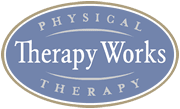Education
Knowledge has the power to transform how you look at a problem and empower you to take control of your pain and improve your functional limitations. At Therapy Works our physical therapists are experts in musculoskeletal care and will provide you with up-to-date information. Sometimes the problem is a straightforward mechanical issue, and sometimes it’s a bit more complicated. In addition to understanding the physical aspects of your pain, we will teach you about the science behind how a hyper-sensitized nervous system, stress, lifestyle habits, and past trauma can all contribute to a vicious cycle of persistent pain. From there we will collaborate with you on a graded path forward to reach your movement goals. If necessary, that may include an interdisciplinary approach with other great specialists in our community.

